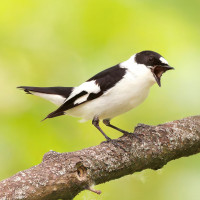Descrizione
The Akrotiri peninsula has a variety of different habitats: a large salt lake, reedbeds, marshes, dry open areas with scattered trees and lots of cover for migrating birds.
Known for being the best place in the western palearctic to see Damigella della Numidia on migration when they use the salt lake to rest at the end of August/early September. Other nice birds you can see here are: Fenicottero, Schiribilla, Cutrettola testagialla orientale, Pavoncella armata, Gambecchio frullino, Pernice di mare, Gabbiano roseo, Gabbiano di Pallas, Sterna zampenere, Mignattino alibianche, Airone rosso, Mignattaio, Biancone, Falco di palude, Albanella pallida, Gruccione, Falco cuculo, Falco della Regina, Pendolino, Calandra asiatica.
Akrotiri peninsula is also a great area to find local scarcities and rarities: Gruccione egiziano Piro piro del Terek Ganga Corrione biondo Monachella del deserto to name a few.
Dettagli
Accesso
A car is essential for exploring the different areas of Akrotiri. The salt lake can be viewed from different areas along the main road, but can be best viewed from the environmental centre where they have a viewing balcony that overlooks the lake.
Akrotiri marsh is signposted before the village of Akrotiri. There is a tower hide at the start of the marsh and a second hide which you can see from the road as you drive along the edge of the marsh. Much of the marsh can be viewed from the road. The flooded meadow on the corner of the western edge of the marsh is a good place to stop and view.
The area known as the "gravel pits" can be reached by taking the first left hand turn after the mini market when entering Akrotiri village. Then take the next left and follow the road through the houses and you'll see a sign for Saint George chapel on your left. Follow this road down towards the coast and you'll find the chapel. The chapel garden is a great place for migrating passerines. Just past the chapel is the "gravel pits", an area of dry, barren terrain (it's flooded in the winter), a great place for many migrant birds.
Terreno e habitat
Zona umida , Alberi e cespugli sparsi , Lago , Spiaggia , Mare , CannetiCaratteristiche dell’area
Polveroso , Asciutto , PaludosoPercorso ad anello
NoÈ utile un cannocchiale?
SiBuona stagione per il BW
Tutto l'annoMiglior periodo per visitare
Migrazione primaverile , Migrazione autunnalePercorso
Strada sterrata , Strada asfaltataGrado di difficoltà del percorso a piedi
Difficoltà mediaModalità di accesso
A piedi , Bicicletta , MacchinaCapanno/torretta di osservazione
SiInformazioni aggiuntive
Damigella della Numidia stop for just a few weeks every year at the end of August and they often arrive late and leave early in the morning so best to arrive and view the salt lake at first light.
The area is also know for its raptor migration and on some days, hundreds of Falco pecchiaiolo, Falco di palude, Nibbio bruno and Falco cuculo can be seen along with many other species of birds of prey.
 male breeding Cyprus_1576.jpg)
 wild, Spring Cyprus_w_7883.jpg)
 Spring Cyprus_8606.jpg)


